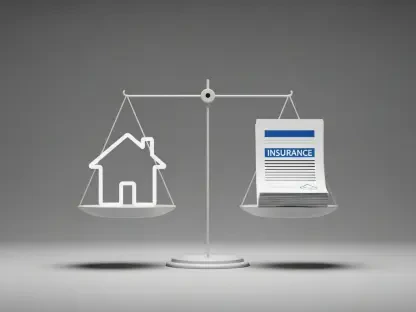In an era where consumer trust in the insurance industry is at an all-time low, a groundbreaking approach known as Brokerage as a Service (BraaS) emerges as a potential game-changer to address this critical challenge and restore confidence. Distrust, fueled by opaque pricing, convoluted policy terms, and experiences often perceived as overly sales-driven, has created a significant barrier between insurers and the public. Many individuals, despite recognizing the importance of financial protection, hesitate to engage due to skepticism or confusion. A striking statistic from a recent LIMRA study highlights that 42 percent of Americans feel underinsured for life coverage, yet a large portion avoids purchasing policies because of these trust issues. BraaS offers a promising solution by rethinking how insurance is distributed, embedding it into everyday transactions and trusted platforms to make it more accessible, relevant, and transparent. This innovative model could be the key to restoring confidence and transforming the industry’s relationship with consumers.
Redefining Insurance Distribution with Contextual Integration
BraaS introduces a revolutionary way to deliver insurance by integrating coverage options into high-intent moments within a consumer’s financial journey, such as during a mortgage application or car purchase. This contextual approach aligns insurance with significant life decisions, making it feel less like a standalone product and more like a natural extension of the transaction. By embedding these offerings into platforms that customers already use and trust, the model reduces the friction typically associated with insurance purchases. Research indicates that this integration can boost purchase intent by as much as 25 percent, as it simplifies decision-making and presents options at a time when consumers are most receptive. The seamless nature of this process shifts the perception of insurance from a cumbersome obligation to a supportive service, addressing one of the core reasons for consumer hesitancy. This strategic alignment with everyday financial touchpoints could redefine how the industry connects with its audience.
Beyond the consumer experience, the contextual integration facilitated by BraaS also tackles the issue of relevance, which has long plagued traditional insurance distribution models. When coverage options are presented in low-pressure, situationally appropriate settings, they resonate more deeply with potential buyers. For instance, offering home insurance during a real estate transaction feels intuitive rather than intrusive, fostering a sense of guidance rather than a hard sell. This method leverages the inherent trust consumers have in the platforms or services they are already engaging with, whether it’s a lender, auto marketplace, or digital retailer. By meeting customers where they are—both physically and mentally—BraaS eliminates much of the skepticism tied to conventional sales tactics. The result is a more organic interaction that prioritizes the consumer’s immediate needs over aggressive marketing, paving the way for stronger, more meaningful connections between insurers and their target audience.
Restoring Confidence Through Transparency and Impartiality
A cornerstone of BraaS is its commitment to transparency and impartiality, addressing the widespread distrust caused by complex policies and perceived biases in traditional insurance sales. Unlike conventional models where consumers often struggle to decode legal jargon or rely on agents who may prioritize commissions over client needs, BraaS provides access to licensed brokerage services that offer unbiased guidance. These services enable comparisons across multiple carriers, ensuring that recommendations are tailored to individual circumstances rather than influenced by external incentives. This level of clarity and personalization is crucial for rebuilding faith in the industry, as it empowers consumers to make informed decisions without feeling pressured or misled. By presenting insurance as a value-driven solution rather than a transactional necessity, BraaS helps dismantle long-standing barriers to engagement.
Furthermore, the impartial nature of BraaS fosters a supportive environment where consumers feel prioritized over profit motives. When insurance options are delivered through trusted entities like financial institutions or e-commerce platforms, the interaction carries an inherent credibility that standalone insurers often lack. This model ensures that advice and offerings are not only relevant but also free from the stigma of aggressive upselling. Consumers benefit from a guided experience that simplifies the complexities of coverage, making it easier to understand what they are purchasing and why it matters. This shift toward a more customer-centric approach signals a departure from outdated practices, replacing them with a framework that values trust as much as transactions. As a result, BraaS has the potential to reshape public perception, turning insurance into a service that genuinely serves the consumer’s best interests.
Unlocking Business Value Through Seamless Partnerships
From a business perspective, BraaS presents a compelling opportunity for B2B2C entities such as real estate brokers, property managers, and digital marketplaces to enhance their offerings and revenue streams. By integrating white-label or co-branded insurance products into their platforms, these businesses can provide added value to their customers without the burden of employing licensed agents. BraaS providers handle the expertise and regulatory compliance, ensuring a smooth and responsible integration that benefits all parties involved. This approach not only creates new income sources but also strengthens customer satisfaction and loyalty by addressing a critical financial need at the right moment. Insurance, often an underutilized touchpoint in the consumer lifecycle, becomes a powerful tool for businesses to differentiate themselves in competitive markets through this innovative service model.
Additionally, the partnerships enabled by BraaS allow businesses to build deeper relationships with their clientele by embedding insurance as a seamless part of their service ecosystem. For example, a property management firm offering renters insurance through a trusted platform can enhance its reputation as a comprehensive solution provider. This integration does more than generate revenue; it fosters a sense of reliability and care, as customers perceive the business as looking out for their broader financial well-being. The low-friction delivery of these offerings, supported by the expertise of BraaS providers, ensures that businesses can focus on their core operations while still capitalizing on the insurance opportunity. This dual benefit of operational ease and enhanced customer trust positions BraaS as a transformative strategy for companies looking to expand their value proposition in a meaningful way.
Paving the Way for Industry Evolution
Looking at the broader landscape, BraaS emerged as a response to the urgent need for the insurance industry to adapt to modern consumer expectations amid rising costs and financial uncertainty. Traditional distribution channels, often rigid and disconnected from today’s demand for convenience, have struggled to keep pace with evolving preferences. BraaS represents a shift in mindset, prioritizing customer experience over pure sales metrics. By embedding coverage into trusted platforms and high-intent moments, the industry takes steps to make insurance more timely and relevant, directly addressing the root causes of distrust. This evolution is not just about adopting a new channel but about reimagining how insurance can fit into consumers’ lives with minimal friction and maximum value.
Reflecting on these developments, the path forward becomes clear: the industry must continue embracing innovative models like BraaS to sustain momentum. Businesses and insurers alike need to invest in partnerships that prioritize transparency and contextual relevance, ensuring that coverage options are always presented as solutions rather than burdens. Policymakers and industry leaders are encouraged to support frameworks that facilitate such integrations while maintaining robust consumer protections. By focusing on these actionable steps, the insurance sector can solidify the trust gains achieved through BraaS, ensuring that coverage remains an integral, trusted part of the consumer journey for years to come.









